by Miao-Chia Chen
The NGV Triennial 2020 presented a series of contemporary design and artwork collections, featuring a stunning visual experience and thought-provoking views by multiple artists and designers. Various recent projects demonstrate the creative process and outcomes based on both our history and our modern technical advancements. This exhibition review will introduce and analyse some of the art and design works exhibited in the NGV Triennial.
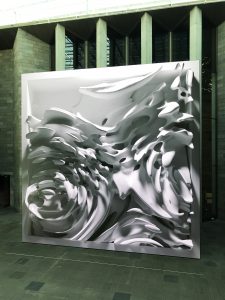
Greeting art-goers as they arrived on the ground floor of the NGV, this large-scale multimedia artwork visualises a 3-dimensional animation formed by artificial intelligence (AI) and quantum computing. The media artist, Refik Anadol, explores the possibilities of creating artwork with the latest technologies. Different from traditional painting, it seems to announce to the whole world just how exciting the future potential for art and design can be.
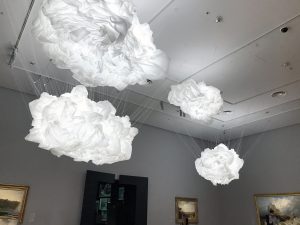
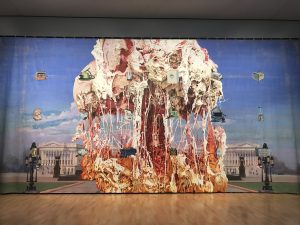
The cloud formation by Celine Bendixen practices the blending of design, science, and art craft. It was handmade from textile to capture a skyscape based on the natural phenomena of clouds. Furthermore, one of the paintings exhibited in the same room, Capitol Viscera Appliances Mural, by Jim Shaw, is one of the most iconic US pop culture art pieces. His work presents the vision of a dreamlike cloud in the aftermath of the second world war.
The clouds were displayed in a room with a range of the NGV’s 19th and 20th-century collection. However, the 21st-century artwork did not feel out of place. Rather, the peaceful power of nature emanating from the clouds draws the audience to the countless wonders in the world around us.
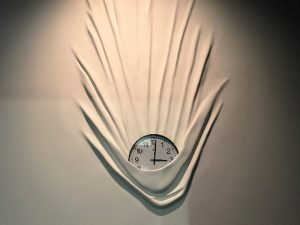
Another iconic artwork in NGV Triennial is the Falling Clock, which was displayed under the Hidden Figures 2020 series. The artist, Daniel Arsham, used plaster to sculpt the form of draped fabric, presenting the design principle of movement. Arsham’s work mainly focuses on his idea of archaeology. He explores the fictional possibilities and imagines how everyday objects, such as a clock, may look in the future.
Crystallisation – Bioplastics, plants, mineral-based materials.
Most products nowadays have been designed for product standardisation and mass manufacturing. As awareness of environmental sustainability grows, more and more designers are devoted to eco-friendly or renewable materials. The reasons for these projects are to rethink our reality and define the possibility to protect nature.
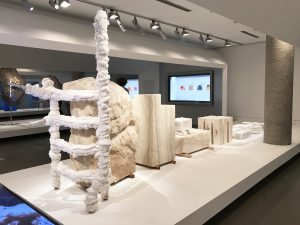
The components in Crystalline, 2020, by Erez Nevi Pana, were made in Israel’s Dead Sea area. The piece examines the metamorphosis of raw material to practice the growth of crystal and natural processes. The project not only aims to interpret the need for restoration of the Dead Sea area, but also the possibility of introducing salt-based architecture for housing, tourism, and public works.
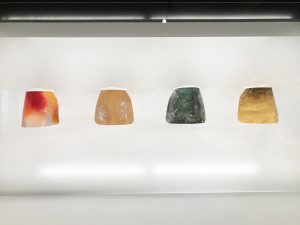
Another item on display in this series, is a set of biodegradable personal protective equipment masks, designed by Alice Potts. She emphasises the dramatic increase of single-use plastic waste globally, especially that of medical equipment during the ongoing COVID–19 pandemic. Therefore, here comes the design Dance Biodegradable Personal Protective Equipment (DBPPE) post COVID facemasks. The bioplastic masks were 3D-printed using filament, mainly made from food waste and dyed by her local flowers in London. Her design was used in 2020 as a support for the PPE shortages in the United Kingdom.
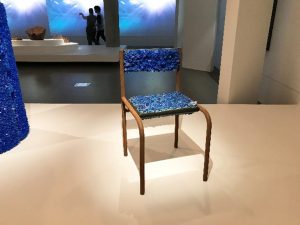
Furthermore, the series of conceptual objects in the room is the furniture modelled by Australian designer, Elliot Bastianon. During his making process, the steel pieces were submerged in a copper sulphate bath to make the blue crystals adhere. His design encourages people to rethink the intersection between our human-centred society and the systems of our environment.
It is clear these critical design works are not for long-term practical use. However, they do successfully open a conversation for sustainable design development. This demonstrates to the public how designers around the world are experimenting in finding ways for a more sustainable future.
Historical Collection
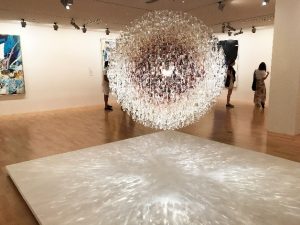
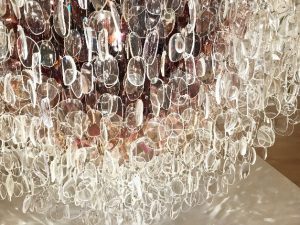
The large crystal-like chandelier, Optical (Tinted) 2009, is composed of more than 4500 recycled prescription spectacle lenses. It illuminates the surrounding areas from the core with the refraction of light by the layers. It is astonishing that it can be mass manufactured and the details of the product itself were considered.


An ode to the airbag 2019, is a standing lamp that consists of several airbags. Ben-Tovim intends to highlight the Takata airbag tragedy in 2016. The airbag is widely used as a lifesaving technology and can be found in most new cars throughout the world. The design acts as a reminder of the interconnectedness and fragility of design and manufacturing. Additionally, the airbag reveals not only the best but also the worst aspects of the production chain.

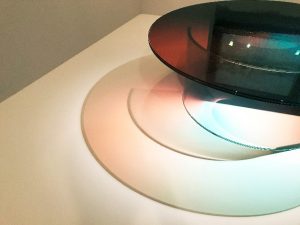
Lastly, the design, Colour dial table, sunrise light 2020, displayed as part of a broad range of projects, is a circular glass table with hues of colour on the glass surface. Its intent is to use the glass as a lens and create the changing of lights during the daytime. The designers use the forms and coloured glass to interact with its environment. In terms of functionality, the work is considered at the intersection between art and design.
It is fascinating to see how artists and designers communicate to their viewers through their works. People use their pieces to raise discussions, inspire others, and continue writing human’s history. I am personally thankful to NGV for providing this great opportunity to learn from these outstanding works in a combination of contemporary art and design.
photography by Miao-Chia Chen

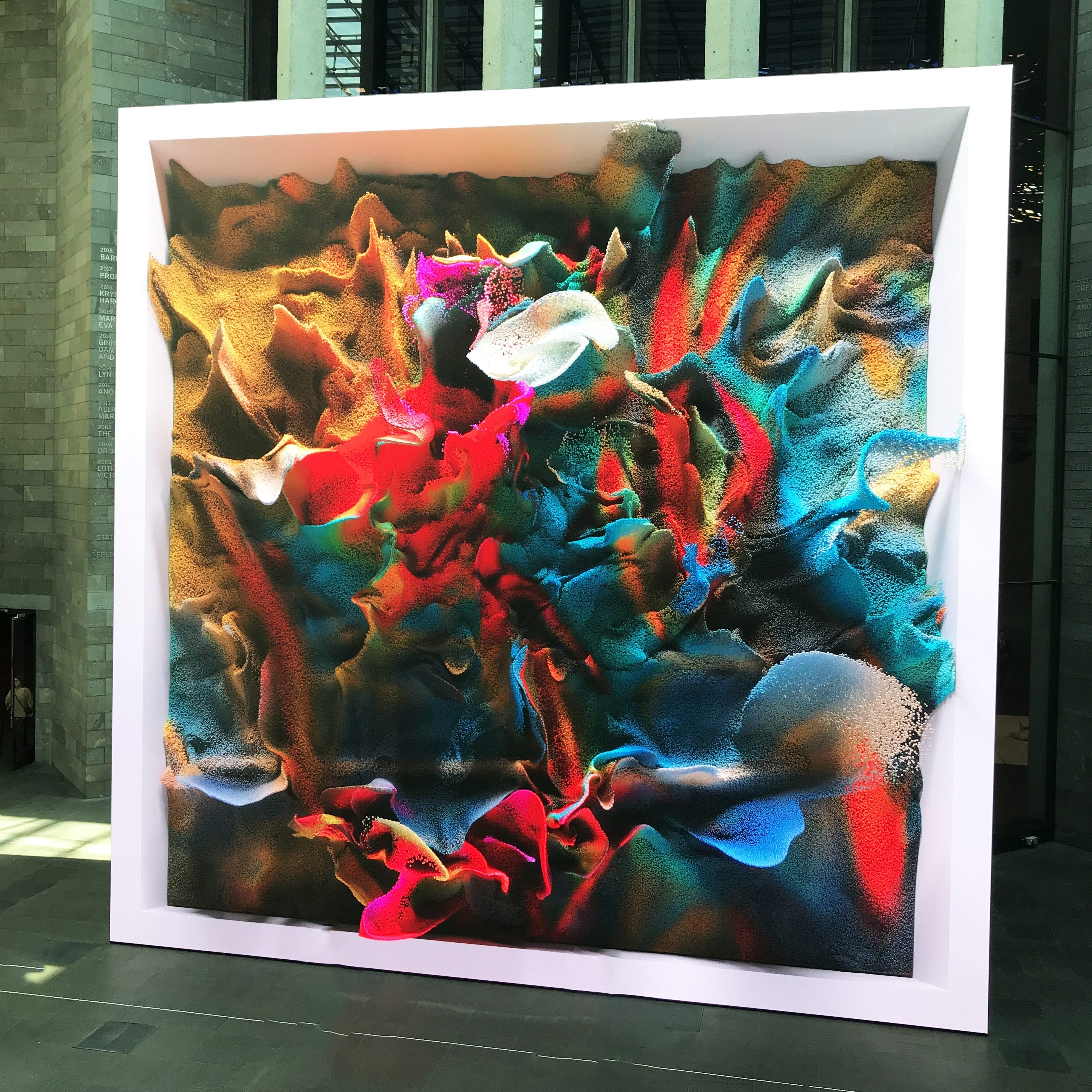
Leave a Reply